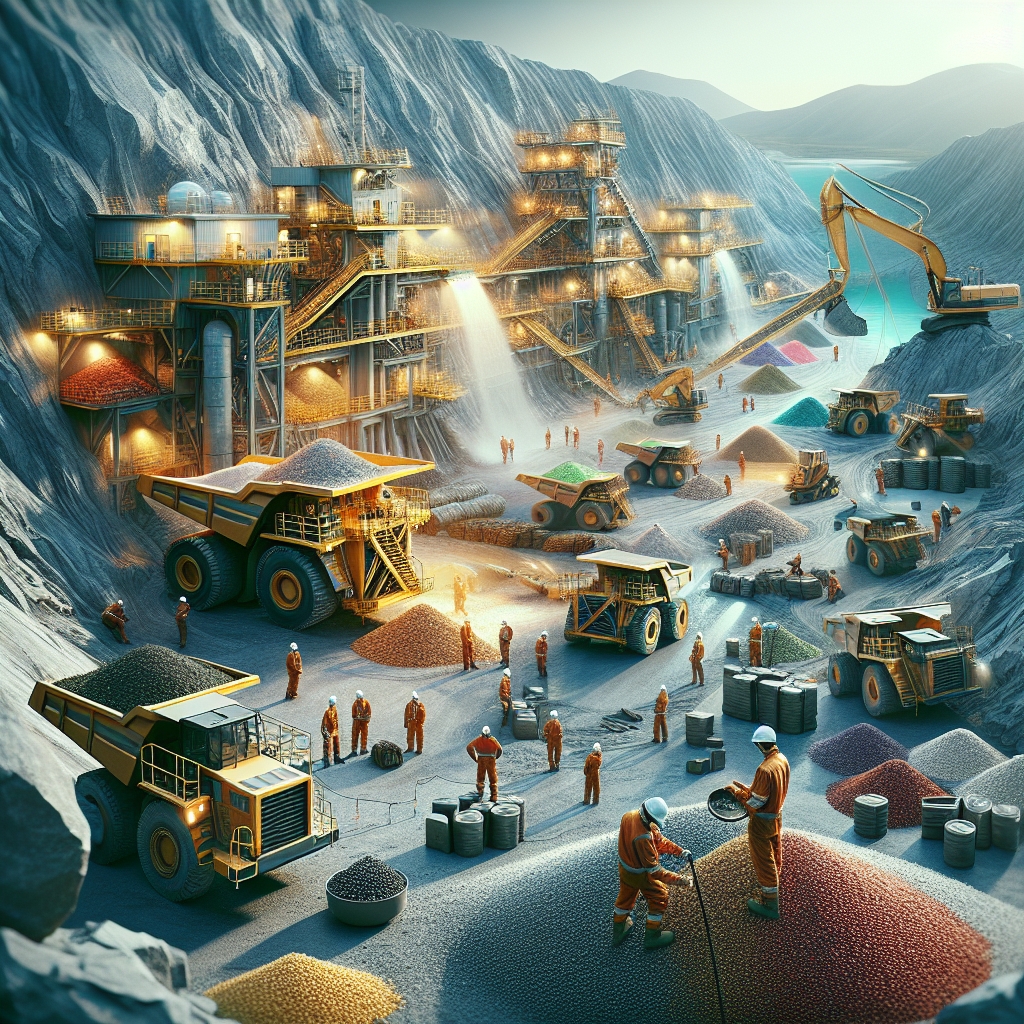The exploration and mining of rare earth minerals have become a focal point for investors looking to capitalize on the materials essential for modern technology. These minerals, critical for the production of everything from smartphones to electric vehicles and renewable energy technologies, present unique investment opportunities. This article delves into the intricacies of investing in rare earth mineral mining, highlighting the potential rewards and risks associated with this sector.
The Significance of Rare Earth Minerals
Rare earth minerals are a group of 17 elements that, despite their name, are relatively abundant in the Earth’s crust. However, their economic extraction and processing are challenging, making them 'rare’ in terms of accessibility. These elements are indispensable in the manufacture of a wide range of high-tech products. For instance, neodymium and dysprosium are crucial for the magnets used in wind turbines and electric vehicle motors, while europium and terbium are used in fluorescent and LED lighting.
The demand for rare earth minerals is on the rise, driven by the global push towards clean energy and high-tech innovations. This increasing demand, coupled with geopolitical tensions and supply chain vulnerabilities, has highlighted the strategic importance of these minerals. Countries and companies are now seeking to secure stable supplies of rare earths, which in turn presents significant opportunities for investors.
Investment Opportunities and Challenges
Investing in rare earth mineral mining can be approached in several ways, each with its own set of opportunities and challenges. Direct investment in mining companies is the most straightforward approach, allowing investors to benefit from the entire value chain of rare earth production. However, this comes with high risks due to the capital-intensive nature of mining projects, regulatory hurdles, and the volatility of rare earth prices.
Another avenue for investment is through exchange-traded funds (ETFs) that focus on rare earths and other strategic minerals. These funds offer a more diversified and less risky entry point into the rare earth market, though they may still be susceptible to market fluctuations and geopolitical risks.
Joint ventures and partnerships with existing mining operations in politically stable countries can also mitigate some of the risks associated with rare earth mining. Such collaborations can provide access to expertise, infrastructure, and markets, essential for the successful development of rare earth projects.
Geopolitical Considerations
The rare earth mineral market is heavily influenced by geopolitical factors. China currently dominates the global supply chain for rare earths, controlling a significant portion of the world’s production and processing capabilities. This dominance presents a strategic vulnerability for other countries, making the diversification of supply sources a critical issue.
Investors in rare earth mineral mining must be cognizant of these geopolitical dynamics, as they can significantly impact the stability and profitability of rare earth projects. Countries with rich rare earth deposits, such as Australia, Canada, and the United States, are actively seeking to develop their resources to reduce dependence on Chinese supplies. Investments in these regions may offer strategic advantages but also require careful navigation of regulatory and environmental considerations.
Risks and Considerations
While the potential for high returns exists, investing in rare earth mineral mining is not without its challenges. The sector is subject to environmental, social, and governance (ESG) concerns, including the impact of mining on local ecosystems and communities. Investors must consider these factors, as they can affect the feasibility and public perception of mining projects.
Price volatility is another significant risk. The prices of rare earth elements can fluctuate widely based on supply and demand dynamics, technological advancements, and geopolitical events. Investors need to stay informed about global trends and market conditions that could affect the rare earth industry.
Finally, the technical and financial barriers to entering the rare earth mining sector are considerable. Developing a rare earth mining project from exploration to production is a complex, time-consuming, and capital-intensive process. Potential investors must conduct thorough due diligence, assessing the technical feasibility, market potential, and regulatory landscape of any investment in this sector.
Conclusion
Investment in rare earth mineral mining offers a unique opportunity to participate in a market that is critical for the future of technology and clean energy. However, it requires a nuanced understanding of the sector’s challenges and risks. By carefully evaluating investment options and considering geopolitical, environmental, and market factors, investors can navigate this complex landscape. As the world continues to shift towards sustainable technologies, the demand for rare earth minerals is set to grow, potentially rewarding those who invest wisely in this essential sector.

